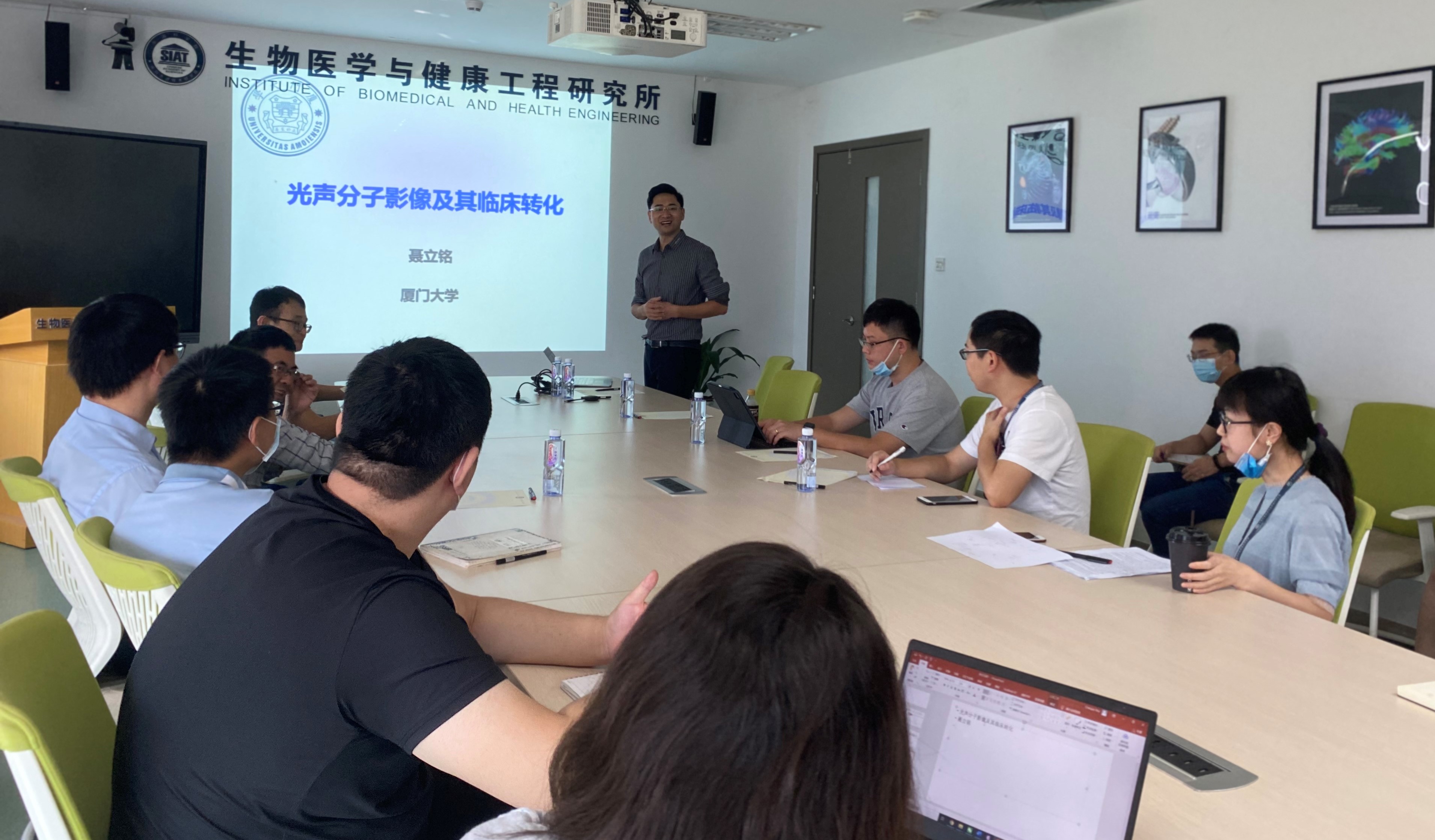Professor Nie Liming from Xiamen University was invited to Shenzhen Institutes of Advanced Technology for academic exchanges on October 12, 2020, and delivered an academic report titled "The Latest Progress and Applications of Photoacoustic Molecular Imaging". In the report, Professor Nie Liming mainly shared with the audience the latest technological progress made by his research group in photoacoustic molecular imaging techniques, namely photoacoustic tomography and photoacoustic microscopy. At the same time, he also introduced to everyone the applications of small-molecule probes, such as novel near-infrared dyes, in highly sensitive and specific disease detection.

Professor Nie Liming communicated with the teachers and students of Shenzhen Institutes of Advanced Technology
Personal Profiles: Nie Liming is a professor and doctoral supervisor at Xiamen University. He is a recipient of the National Science Foundation for Excellent Young Scientists, one of the first batch of Nanqiang Young Talents with Outstanding Abilities, a Distinguished Professor in Zhejiang Province, an Outstanding Young Talent in Fujian Province, and a High-level Talent in Fujian Province. His research directions are closely centered around the combination of medical and engineering aspects in molecular imaging. He has improved the confocal efficiency of optics and acoustics and independently developed a photoacoustic microscope, and proposed the concept of a photon recycler. He has developed multimodal probes based on ultra-high sensitive photoacoustic detection, and overcome the problem of low sensitivity in deep tissue detection. He has revealed that the inhomogeneity of the local magnetic field is a key factor for T2 contrast enhancement, thus improving the theoretical mechanism of MRI contrast agents. He has achieved accurate identification of lesion boundaries and integrated diagnosis and treatment across scales such as molecules, microvessels, and tissues, overcoming the problem of blurred and inaccurate tumor boundaries. As a corresponding author or first author, he has published more than 50 papers in journals such as Nature Communications, Journal of Nuclear Medicine, Angewandte Chemie, and Cancer Letters. His works have been cited and received highlighted evaluations in magazines such as Nature Methods, Nature Photonics, and Chemical Reviews, with the number of citations exceeding 4000 times.